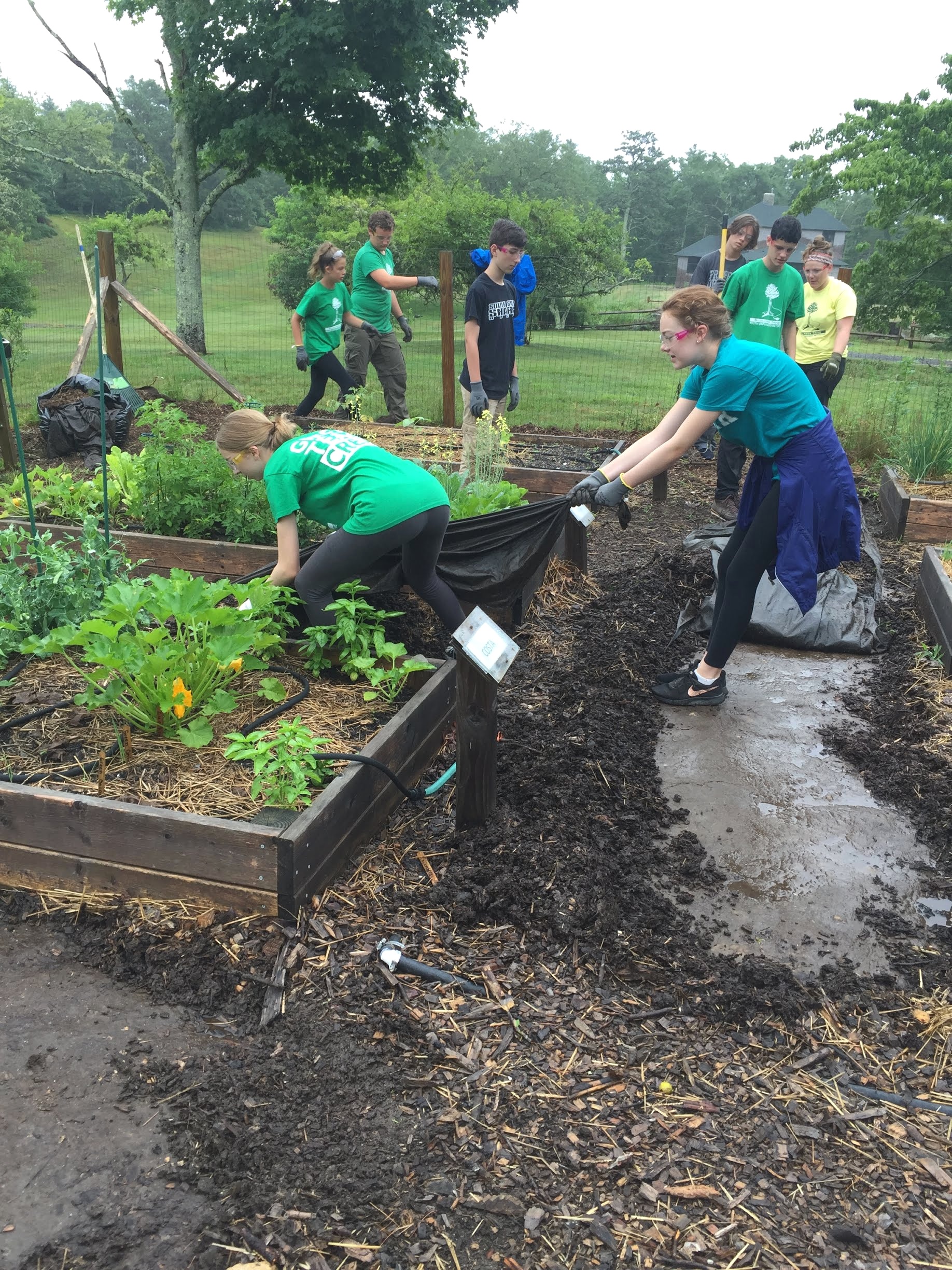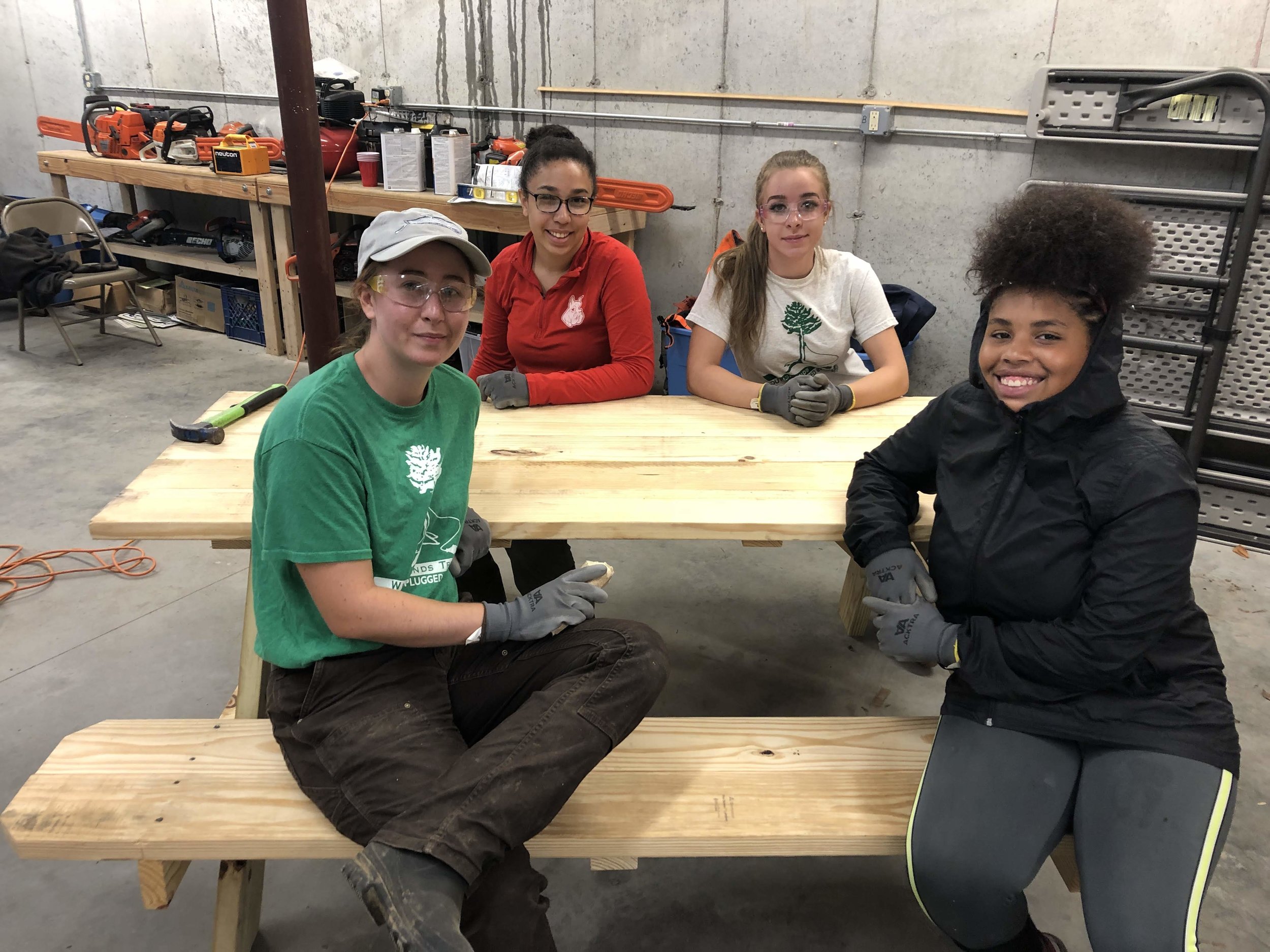By Stewardship Manager, Erik Boyer
Sierra Club volunteers and Wildlands staff pose for a group photo at Myles Standish State Forest.
This past August, twenty-four volunteers from the Sierra Club joined Wildlands Trust for a week of service on some of our trails on the South Shore. The group consisted of volunteers from all over the country who dedicated their time from August 5 – August 9 and helped improve the trails at Wildlands’ Tucker Preserve and the Equestrian Loop at Myles Standish State Forest. This is the fourth year of this partnership, which focuses primarily on volunteer work at Wildlands but has included service projects with the town of Plymouth and the Friends of Myles Standish.
This year, for the first time, we spent a day outside of Plymouth on the Indian Head River in Pembroke and Hanover. The first day, the group spent the day cutting back trails on the Indian Head River Loop (IHRL), a trail that passes through the towns of Pembroke, Hanover, and Hanson. A good portion of this work took place on Tucker Preserve, which is one of the entry points to the IHRL. A group also assisted a local Boy Scout for his Eagle Scout project, where they opened up the trails at the town of Hanover’s Iron Brook Mine Trails.
Sierra Club volunteers working together on a trail in Plymouth in 2017.
At the end of the week, the group worked with the Friends of Myles Standish and helped cut back vegetation on portions of the Equestrian Loop. Volunteers cut back the dense understory scrub oak and bayberry from the trails and cleared fallen trees with handsaws. Over 3 miles of trails were cleared over the course of two days!
Thanks to the efforts of Zehava Rosenberg and Madeleine Zember, two Sierra Club volunteers, over 20 volunteers come to Plymouth for a weeklong service trip each year. Due to the help of the volunteers this year, hikers will be able to enjoy these trails this fall. If you would like to learn more about the Sierra Club’s service trips, check out: content.sierraclub.org/outings/volunteer-vacations. For information on how you can volunteer with Wildlands Trust, visit our website at wildlandstrust.org/volunteer.






